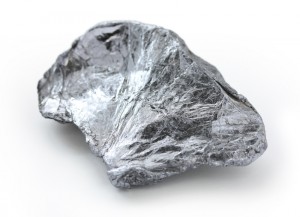Molybdenum Price
Very few people have really heard about molybdenum. Your work will need to involve this metallic element before you become familiar to it. You’d know what it is if you mine or manufacture this metal or you’re an investor trying to research about the supply and demand for molybdenum. But for most people, it’s unheard of.
It doesn’t have an illustrious history as well. In fact, molybdenite, from which you can get molybdenum, was mistaken for graphite for many years. It was used to make pencils and people thought it contained lead. But in 1778, a Swedish scientist proved that molybdenite wasn’t graphite at all and that it didn’t contain lead. He thought that the mineral had a previously unknown element, but he couldn’t isolate it himself. In 1781, another Swedish scientist was finally able to do so, and that scientist called the new element molybdenum, which was “lead” in Greek.
It is quite toxic unless in small quantities, but it is an essential trace element for plants and animals. It doesn’t occur naturally, and it can only be extracted from molybdenite, powellite, and wulfenite. It also comes as a byproduct of copper and tungsten mining operations. It is silvery white in color, and it is very hard. But it is more ductile and softer than tungsten.
Below is the historical Molybdenum price per metric ton.
| Year | Price | Price (Inflation Adjusted) | Change |
|---|---|---|---|
| 2012 | $27,307.58 | $30,208.44 | 0% |
| 2013 | $21,913.64 | $23,883.26 | -25% |
| 2014 | $24,565.75 | $26,352.11 | 11% |
| 2015 | $17,547.30 | $18,804.49 | -40% |
| 2016 | $13,988.10 | $14,653.26 | -25% |
| 2017 | $14,750.00 | $15,104.00 | 5% |
| 2018 | $16,005.54 | $16,005.54 | 8% |
Price History of Molybdenum
One of the reasons why this metal can be valuable is that it is very rare. You can only find 1.1 parts of it per million.
In the market, it is listed as molybdenum oxide, and right now it costs about $5.53 per pound. Interest in the metal has grown recently, and that’s because the increase in the global industrial sector. As markets emerge and indulge in construction and manufacture of hi-tech products, the demand for this tough metal increases. It has a very high melting point and it is resistant to corrosion.
Molybdenum as Investment

If you’re betting on this metal, you’re actually placing your bets in two suppositions. The first is that you think there won’t be a major disruption to the supply of the metal. Its major producers are US, China, and Chile.
The second supposition is you believe there will be a greater demand for it because of increased industrial activity in countries like China and India. This substance is much tied in to industrial manufacturing, as just about every type of extremely high-strength steel has molybdenum.
You can trade futures of this commodity in the London Metal Exchange, with contract lots of 6 tons with delivery points in Antwerp, Singapore, Rotterdam, and Baltimore. You can also buy and sell stocks in companies that depend on this metal for a significant part of their revenues. You’ll need to buy stocks in companies that explore, develop, and mine the element. These include General Moly in the US, Thompson Creek Metals Company with operations in the US and Canada, and diversified metals companies like Molycorp, Northern Dynasty Minerals, and Mercator Minerals.
Purposes Used For
Here are some of the uses of molybdenum:
- It is used with steel to form ultra-high strength steel. It’s long been known that this material is tough, which is why it as already used as part of the plating in tanks as early as WW I. Since not much of it is needed to get the strength, it provided protection while it also allowed greater speed and maneuverability. Today, alloys of this type can withstand pressure of up to 300,000 pounds per square inch.
- It also has a high melting point, and it made the steel stronger at higher temperatures. This was why the Germans used it to alloy their steel for their heavy artillery. In fact, their Big Bertha howitzers were made from this type of alloy because plain steel melted from the heat created by the blast. Today, its resistance to heat makes it suitable for use in electrodes for electrically heated glass furnaces. It’s also used to make some electrical filaments.
- The metal is also used extensively in the nuclear power sector, and it is also used to make aircraft and missile parts.
- When it is alloyed with nickel, it also forms an alloy that’s highly resistant to both heat and corrosion. This makes it highly valuable in the chemical industry.
- When paired with disulphide, it becomes a compound that is used as a lubricant for high temperatures.
- Paired with trioxide (O3), it forms another compound that is used to attach enamels to metals.
- It can also be used as a catalyst to refine petroleum.
Just about every use of molybdenum is for industrial applications. If an emerging market is undergoing increased activity in the use of specialized steel, then it’s likely that it will require the use of this special metal.
